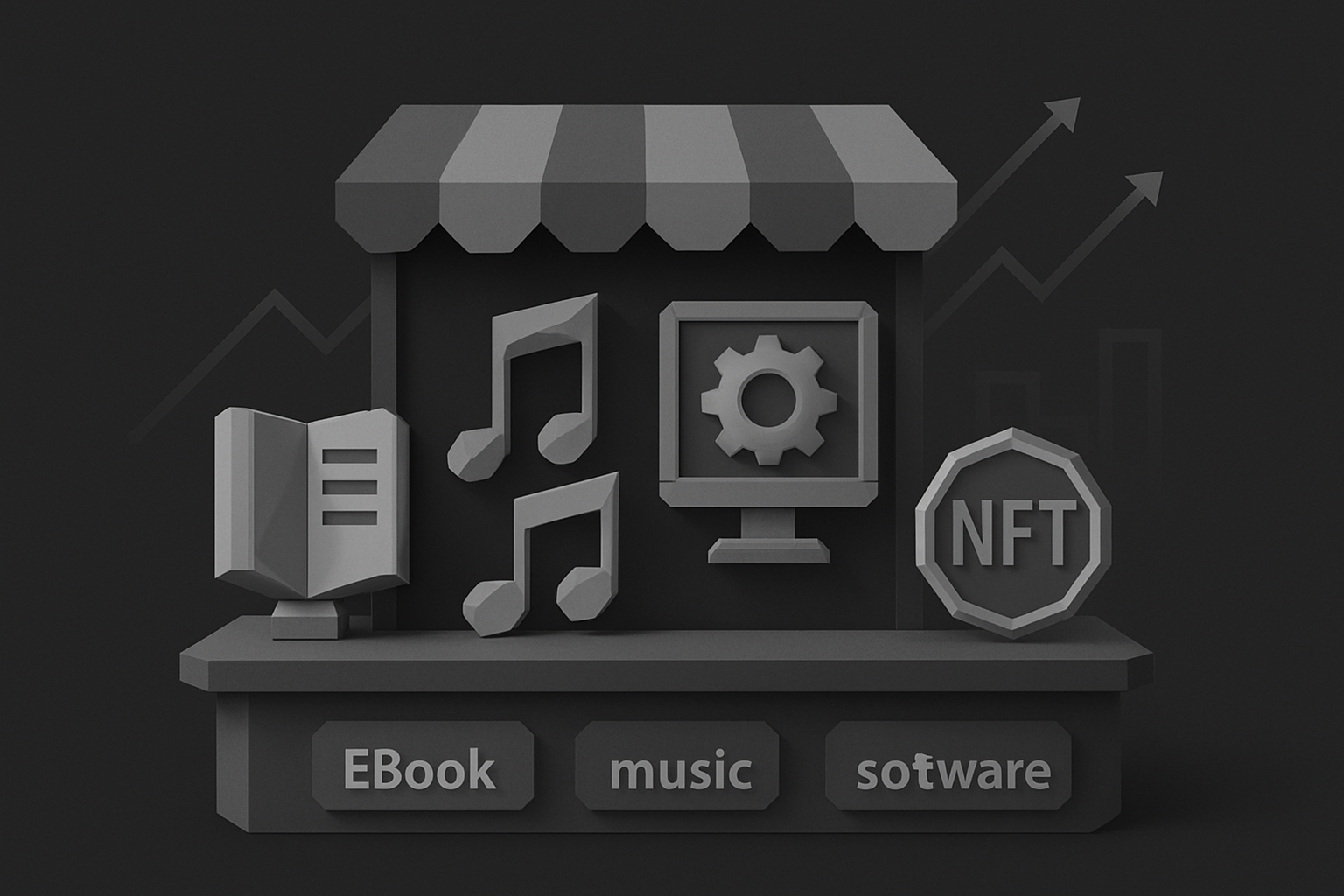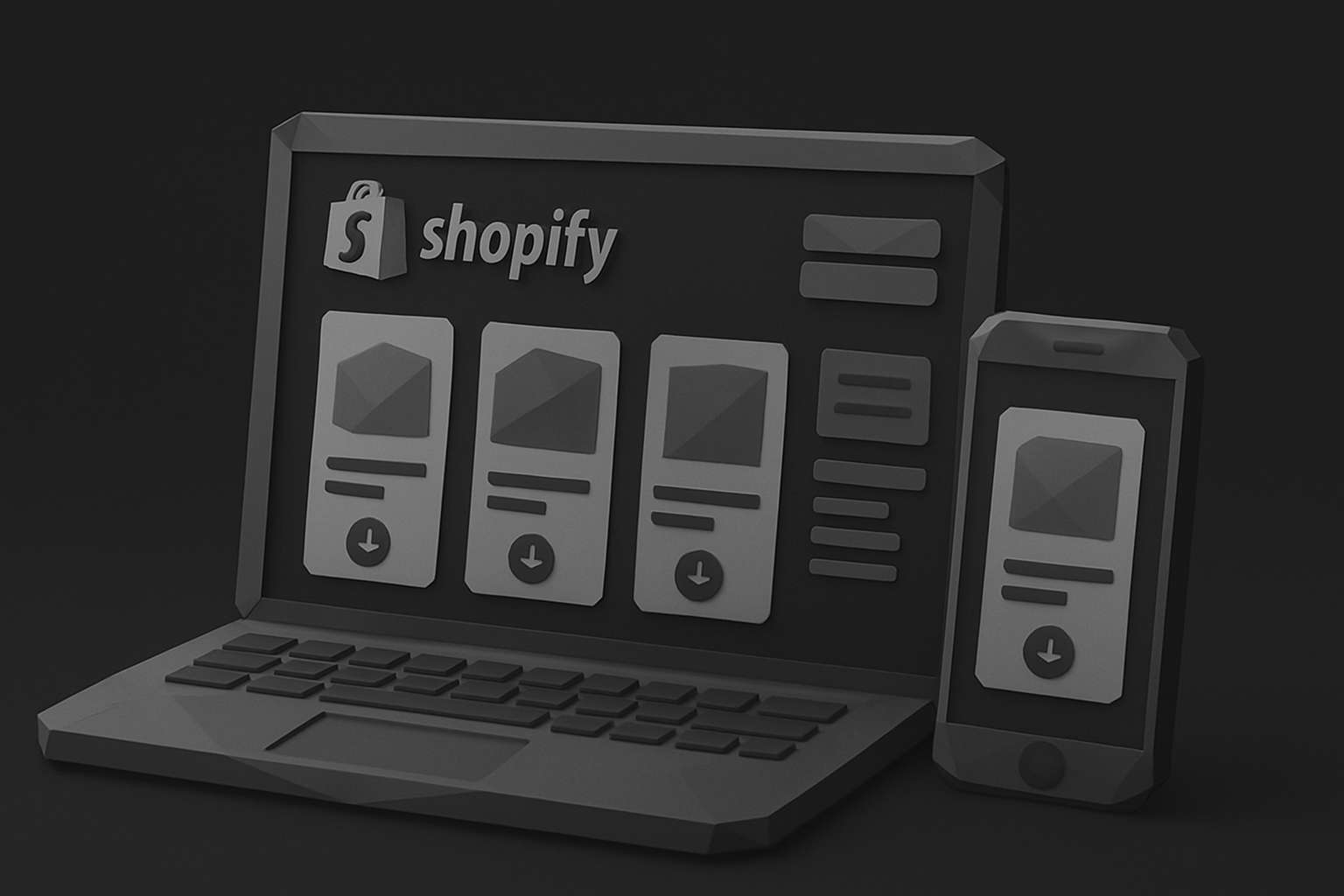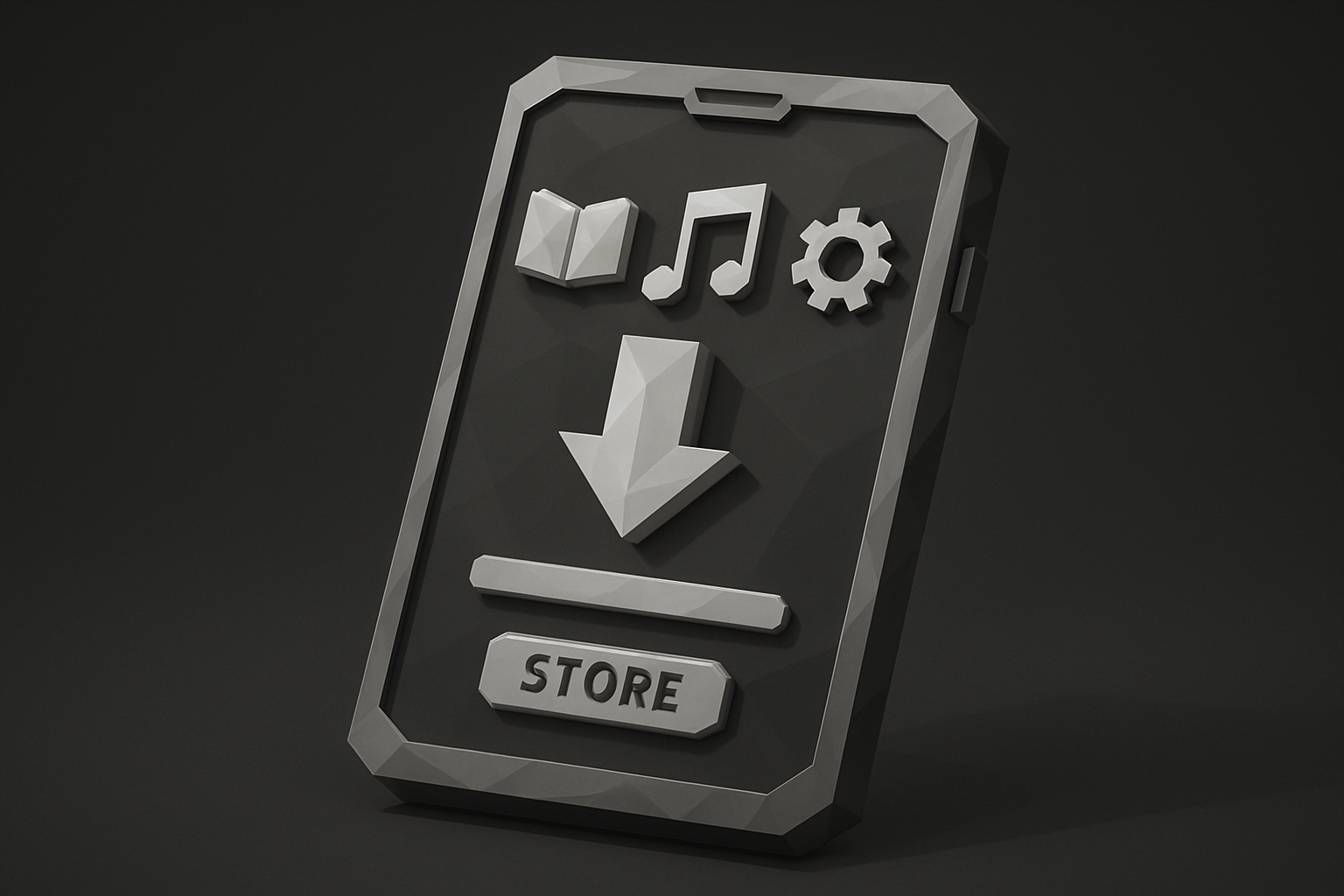The world of ecommerce is exploding with opportunity, and nowhere is this more evident than in the rise of digital products shopify businesses in 2025. Selling digital products on Shopify means no inventory hassles, instant global delivery, and the freedom to scale without boundaries.
For creators and entrepreneurs, digital products shopify stores unlock the potential for passive income and long-term growth. With no shipping or storage costs, you can focus on what matters: building and selling your expertise.
This guide will walk you through every step to launch, manage, and scale a thriving digital products shopify business this year. From choosing your product type and setting up your store, to automating delivery, marketing, staying compliant, and exploring future trends—everything you need is here.
Understanding Digital Products and Market Trends in 2025
Digital products have become the backbone of modern ecommerce, transforming how creators and entrepreneurs generate revenue online. With the rise of digital products shopify businesses, the market is seeing explosive innovation and demand.

The Rise of Digital Products in Ecommerce
Digital products are intangible goods delivered electronically. Common examples include eBooks, online courses, music tracks, software, design templates, and licenses. In 2025, the digital products shopify ecosystem is thriving as global ecommerce sales are projected to reach $7.5 trillion, with a significant share coming from digital goods. This surge is fueled by consumer expectations for instant access, remote learning, and on-demand content. Global eCommerce sales projected to reach $7.5 trillion in 2025.
Key advantages of digital products shopify stores over physical goods include:
- No inventory or shipping costs
- Instant fulfillment and delivery
- Low overhead and high scalability
- Global reach with minimal barriers
Many creators have built successful digital products shopify businesses by selling everything from fitness programs to music loops and AI-generated art. The shift toward remote work and the booming creator economy only amplify this trend. New product types like NFTs, digital art, and AI-powered content are emerging, giving entrepreneurs fresh opportunities to innovate.
Why Shopify is the Leading Platform for Digital Product Sales
Shopify stands out as the top choice for digital products shopify businesses due to its robust infrastructure, user-friendly interface, and global reach. Compared to other platforms, Shopify offers superior scalability and a seamless setup for creators of all sizes.
| Feature | Shopify | Other Platforms |
|---|---|---|
| Ease of Use | Intuitive | Varies |
| Scalability | High | Moderate |
| Digital Delivery Apps | Extensive | Limited |
| Security & Compliance | Advanced | Basic to Modest |
| Global Payments | Integrated | Often Fragmented |
Shopify’s built-in and third-party apps make digital delivery effortless. You can automate sending download links, manage licensing, and even track customer engagement from one dashboard. Security is a top priority, with advanced encryption and compliance features built-in to protect both sellers and buyers.
For digital products shopify stores, seamless payment integrations and worldwide reach mean you’re not limited by geography. This flexibility empowers creators to serve a global audience and scale quickly as trends evolve. Whether you’re selling a single eBook or a full course library, Shopify’s ecosystem is designed to support your growth and innovation.
Step-by-Step: Setting Up Your Shopify Store for Digital Products
Setting up your digital products shopify store is your first step toward unlocking passive income potential in 2025. This section will guide you through every detail, from choosing the right plan to fine-tuning your store settings for seamless digital sales. Let’s break it down so you can launch with confidence.

Choosing the Right Shopify Plan and Theme
Before you sell digital products shopify recommends starting with a plan that fits your growth goals. For most digital entrepreneurs, the Basic Shopify or Shopify plan offers all the essentials—unlimited product listings, multiple staff accounts, and robust payment integrations. Here’s a quick comparison:
| Plan | Best For | Key Features | Price (monthly) |
|---|---|---|---|
| Basic Shopify | Starters, small stores | Unlimited products, analytics | $39 |
| Shopify | Growing brands | Advanced reports, more staff | $105 |
| Advanced | Scaling businesses | Custom reports, lower fees | $399 |
When it comes to themes, prioritize a clean, minimalist design. Look for templates built for digital products shopify stores—these often highlight product previews, instant downloads, and customer testimonials front and center.
Consider themes that offer:
- Download buttons or sample preview sections on product pages
- Clear navigation and distraction-free layouts
- Fast load times and mobile-first responsiveness
Did you know mobile commerce is projected to account for 59% of all e-commerce sales in 2025? Your theme must be fully responsive to capture this audience. For more on theme selection and store setup, check out this Shopify digital products guide.
Configuring Digital Products in Shopify
Once your theme is set, it’s time to configure your digital products shopify catalog. Start by creating a new product in your Shopify dashboard. Be sure to uncheck the “This is a physical product” box. This signals Shopify not to require shipping details at checkout.
For digital goods, inventory tracking is unnecessary. Turn it off so you can sell unlimited copies without manual updates. Next, focus on your product presentation:
- Write clear, benefit-driven titles and descriptions
- Add high-quality images or video previews
- Use product templates that distinguish digital from physical goods
A great way to boost conversions is by adding sample files—like a preview PDF, short audio clip, or video teaser—directly to the product page. This gives buyers a taste of what they’ll receive and builds trust instantly.
If you offer different file types, use Shopify’s product variants to organize them. For example, you might sell both an eBook and an audiobook version under the same listing, making navigation seamless for your customers.
Essential Shopify Settings for Digital Sales
Fine-tuning your settings is crucial to delivering a smooth digital products shopify experience. Start by reviewing your tax setup. Digital products are taxed differently depending on the buyer’s location, so use Shopify’s built-in tax engine to automate VAT or GST collection where required.
Set up payment gateways that support instant digital delivery. Shopify Payments, PayPal, and Stripe are all excellent choices for rapid transactions.
Next, streamline your checkout process. Remove unnecessary fields like shipping address to make digital purchases frictionless. This not only speeds up the customer journey but also reduces cart abandonment.
Your store policies matter, too. Write clear terms for digital product returns and refunds. Since digital goods are often non-refundable, set expectations upfront. Include a dedicated FAQ page answering common questions such as:
- How do I access my downloads?
- What should I do if my file doesn’t open?
- Are digital purchases refundable?
By covering these essentials, you build trust and reduce support requests. As your digital products shopify business grows, revisit your policies and settings regularly to stay compliant and customer-focused.
Automating Delivery and Managing Digital Files Securely
Selling digital products shopify-style is all about seamless delivery and airtight file management. When someone clicks “Buy,” they expect instant access—no waiting, no hassle. That’s why automating file delivery and keeping your digital assets secure is non-negotiable in 2025.
Let’s break down how to automate, protect, and monitor your digital products shopify store for maximum efficiency and customer satisfaction.

Using Shopify’s Digital Downloads App and Alternatives
Shopify’s native Digital Downloads app lets you attach digital files directly to product listings. Once a customer checks out, the system automatically sends a download link via email and the order confirmation page—no manual intervention needed. This simplicity makes it a solid starting point for digital products shopify sellers.
However, if you want advanced features, consider third-party apps like SendOwl or Digitally. These platforms offer bulk uploads, detailed analytics, and even license key generation for software products. Here’s a quick comparison:
| App | Automation | License Keys | Analytics | Bulk Upload |
|---|---|---|---|---|
| Shopify DD | Basic | No | Basic | No |
| SendOwl | Advanced | Yes | Advanced | Yes |
| Digitally | Advanced | Yes | Advanced | Yes |
Automating delivery isn’t just about speed—it’s about scaling effortlessly. For example, with SendOwl, you can automate delivery of serial numbers for software or set up tiered access for online courses. This level of automation is essential as you grow your digital products shopify business.
Want more best practices? Discover proven sell digital goods strategies to maximize automation, conversion, and customer satisfaction.
File Security and Access Control
Security is crucial for digital products shopify stores. You don’t want files floating around the web or being shared endlessly. Set download limits and expiration dates to control access. For instance, allow three downloads per purchase or set links to expire after a week.
Protect your files with watermarking or PDF stamping. This discourages unauthorized sharing and helps track leaks. For premium content, use unique access codes or integrate with external file hosts like Amazon S3 for enhanced protection.
IP restrictions add another layer, ensuring only your buyer can access the files. Version control is also important—if you update an eBook or course, notify customers and provide the latest version seamlessly. Managing these details keeps your digital products shopify store trusted and secure.
Analytics and Performance Tracking
Understanding how your digital products shopify business performs is key to scaling. Shopify’s built-in analytics show you which products are downloaded most, when, and by whom. Track sales, monitor refund rates, and see which marketing channels drive the most conversions.
Use these insights to optimize product offerings. For example, if a specific eBook gets lots of downloads but few repeat purchases, consider bundling it or adding bonus content. Customer engagement metrics highlight where to invest your marketing energy.
Data-driven decisions help you refine your digital products shopify strategy, ensuring your store stays ahead of the competition and continues to grow.
Optimizing the Customer Experience for Digital Product Buyers
Delivering a seamless customer experience is essential for any digital products shopify store. Buyers expect instant access, intuitive navigation, and clear communication. By focusing on each stage of the journey—from browsing to downloading and support—you can increase satisfaction and loyalty.

Customizing Product and Download Pages
First impressions matter. Your digital products shopify pages should be clean, visually engaging, and focused on the benefits of each item.
- Use high-quality visuals and concise descriptions.
- Highlight instant delivery and product previews.
- Embed video guides or sample content to build trust.
Mobile responsiveness is critical, especially as mobile commerce is set to account for 59% of total e-commerce sales in 2025. Ensure your product pages load quickly and look great on any device. Custom download pages can reinforce your brand, offering step-by-step access instructions and helpful resources. Consider adding a digital product-specific FAQ to address common questions and reduce friction.
Streamlining Checkout and Fulfillment
A frictionless checkout is crucial for digital products shopify success. Remove unnecessary fields to speed up the buying process. Offer guest checkout options and support multiple payment methods for convenience.
After purchase, display instant download links directly on the confirmation page. Customize confirmation emails to include download instructions and support contacts. For stores selling both digital and physical goods, make it clear which items are available instantly and which require shipping.
Automate fulfillment wherever possible. Use Shopify apps to deliver files, license keys, or access codes without delay. This ensures buyers receive their purchases quickly and securely.
Managing Refunds, Returns, and Customer Support
Handling refunds and support efficiently is vital for digital products shopify reputation. Set clear policies for digital goods—since downloads can’t be “returned,” outline when refunds are granted and how access is revoked.
Best practices include:
- Automating common support queries with Shopify apps or chatbots.
- Providing self-service resources, like troubleshooting guides and video tutorials.
- Responding promptly to inquiries to resolve issues before they escalate.
Feature customer testimonials and case studies to build trust and reassure new buyers. A transparent, supportive approach turns challenges into opportunities for loyalty.
Advanced Strategies: Marketing, Compliance, and Scaling in 2025
Ready to take your digital products shopify business to the next level? Advanced strategies in marketing, compliance, and scaling are essential for standing out in 2025. Let’s explore how you can optimize your store, reach more customers, stay compliant, and future-proof your growth in the digital marketplace.
Marketing Digital Products on Shopify
Effective marketing is the backbone of any successful digital products shopify store. Start with SEO—optimize your product titles, descriptions, and metadata using keywords your audience is searching for. Content marketing is crucial. Create blog posts, tutorials, and guides that solve real problems and showcase your expertise. Lead magnets like free downloads or sample chapters can help you build your email list.
Running targeted email campaigns for product launches or updates keeps your customers engaged. Upsell and bundle your digital products to increase your average order value. For inspiration and to discover what’s trending, check out this list of digital products to sell online.
Use analytics tools to monitor which marketing channels drive the most conversions for your digital products shopify store. Don’t forget to leverage user-generated content and testimonials to build trust.
Selling Across Multiple Channels and Platforms
Expanding your reach means selling digital products shopify offerings beyond your main store. Integrate Shopify with external marketplaces, social platforms, and affiliate networks. This multi-channel approach allows you to tap into new audiences and diversify revenue streams.
However, not all platforms are created equal. For example, Facebook has restrictions on digital goods, so always review each channel’s policies. Use affiliate programs to incentivize other creators or influencers to promote your products. Partnerships and collaborations can also help you access new customer segments.
Global sales are booming, with cross-border e-commerce growing at 14% annually. Make sure your digital products shopify store is set up for international customers, offering multiple payment options and supporting different languages where possible.
| Channel | Pros | Cons |
|---|---|---|
| Shopify Store | Full control, branding | Requires own marketing |
| Marketplaces | Built-in traffic | Fees, less control |
| Affiliates | Wider reach | Revenue sharing |
| Social Platforms | Viral potential | Policy limitations |
Legal and Tax Compliance for Digital Products
Compliance is non-negotiable for digital products shopify sellers. Digital VAT/GST regulations require you to collect and remit taxes based on the customer’s location. Shopify can automate much of this process, but it’s your responsibility to configure tax settings correctly.
Protect your intellectual property by clearly stating licensing terms and copyright information on your product pages. Use store policies to outline returns, refunds, and customer rights for digital goods. Privacy and data protection are also vital—ensure your checkout process and file delivery methods respect customer privacy and comply with GDPR or local regulations.
A quick legal checklist for digital products shopify stores:
- Set up automated tax collection by region
- Create clear copyright and license statements
- Publish privacy and refund policies
- Use secure file delivery systems
Stay updated on regional legal changes to avoid costly mistakes as you scale.
Future-Proofing Your Digital Product Business
The digital products shopify landscape is evolving fast. To future-proof your business, stay agile and embrace new trends. AI-generated content, NFTs, and interactive media formats are gaining traction. Experiment with these to diversify your offerings and capture emerging markets.
Building a strong brand and engaged community around your digital products shopify store fosters loyalty and encourages repeat purchases. Invest in automation tools to streamline workflows, from marketing to delivery. Use analytics to identify which products perform best and spot new opportunities.
Keep an eye on customer feedback and industry developments. The most successful digital products shopify entrepreneurs are those who innovate, automate, and adapt quickly.
Personal Branding and Expert Guidance for Digital Product Success
In the rapidly evolving world of digital products shopify, your personal brand is your most valuable asset. With thousands of creators launching new stores every month, standing out isn’t just about having quality products. It’s about building trust and authority that resonate with your target audience.
Start by sharing your journey and expertise through storytelling. Let customers see the real person behind the digital products shopify storefront. Educational content—such as blog posts, tutorials, or behind-the-scenes videos—can demonstrate your knowledge and commitment to helping others succeed. If you’re looking for foundational strategies, the Building digital products essentials guide is an excellent resource to start mastering your craft.
Social proof is the next pillar of authority. Display customer reviews prominently on your digital products shopify store. Did you know that leading competitors boast a 4.4-star average rating, with 80% of reviews at five stars? These numbers aren’t just impressive—they drive conversions. Create a dedicated section for testimonials, and use real stories to highlight the transformation your digital products shopify business can deliver.
Collaboration is another powerful strategy. Partner with other creators for cross-promotions or guest content. This not only exposes your digital products shopify brand to new audiences but also strengthens your credibility within the community. Joint webinars, bundled offers, or shared case studies can amplify your reach and spark new ideas.
Finally, don't underestimate the impact of case studies and detailed testimonials. Feature customer success stories on your digital products shopify homepage or product pages. Use a mix of written quotes, video snippets, and even before-and-after examples. This approach reassures potential buyers that your solutions work and that your brand is trusted by real people.
Personal branding isn’t a one-time effort—it’s an ongoing process that sets thriving digital products shopify entrepreneurs apart. By investing in authority, social proof, and meaningful connections, you lay the foundation for sustainable success in the digital marketplace.
If you’re excited to build a digital product business on Shopify and ready to start turning your knowledge into passive income, you don’t have to do it alone. With all the tips and step-by-step strategies we’ve covered—from setting up your store to automating delivery and future-proofing your brand—you’re already ahead of the curve. But if you want real guidance and a supportive community to keep momentum, CreateSell has your back. We’ll walk you through every stage of your journey, so you can confidently launch and grow your digital products. Ready to take the first step? Get Started